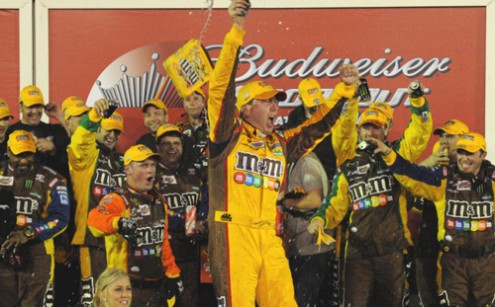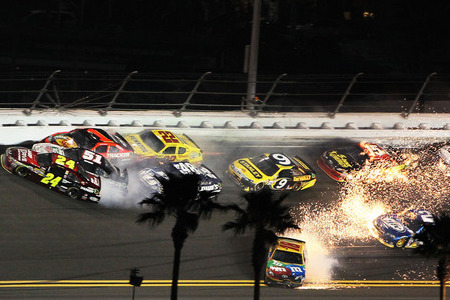As on-track activities continue for the biggest week in NASCAR racing, culminating with next Sunday’s 54th running of the Daytona 500, NASCAR officials will continue scrutinizing cars and the racing action all week, an almost endless loop of technical analysis designed to deliver side-by-side, competitive racing to track-side fans, and more importantly, couch-surfing television viewers. NASCAR’s appeal has always been in the everyman approach to technology and an entertaining product of competitive, unpredictable racing with driver heroes making the difference between checkered flag glory and pit lane disappointment.
NASCAR’s regulators have a variety of tools to employ to ensure they manufacture what they deem to be the best racing, and they aren’t afraid to changes rules, mid-season or mid-week. Taking the liberty to speak for dedicated and casual race fans alike, below is my wish-list for John Darby, NASCAR’s Director of Competition and the man dressed in Santa’s red suit this week.
What I don’t want to see:
Everyone seems to have had enough of last year’s two-step tango, and early signs indicate new regulations have cured that ill. Cars running in tandem are interesting for a lap or two. After that, what more do I need to see until the next round of pits stops tells me whether any of the pairs got mixed and matched? Oh, and pity the poor driver who might be the odd one out, running solo and doomed to watching the race disappear out the front of the windshield.
But, in a haste to eliminate the two-step, let’s not go the other way and end up with one amorphous gaggle of 43 cars - the pack is back! - droning in a thunderous bunched pack, each race lap rife with anxiety that a wiggle causes a chain reaction that eliminates half the field before the half-way point.
A 43-car bunch is a 4-hour roll of the dice, perhaps best taken in by exactly what NASCAR doesn’t want – viewing apathy. Soon, even die-hard fans take to the behaviors of the casual fan: watch the first 10 laps, take a nap, wash the car, watch a movie, and then watch the last ten laps. Later, a cursory rewind of the DVR will show the carnage of “the big one,” the cataclysmic wreck that changed the complexion of the entire race in one long, screeching, crumpling sequence. That’s exactly what I did during Saturday’s Bud Shootout.
What I do want to see:
Differentiation, with the best cars and drivers being able to pull away from the ones who aren’t the best, or at least not up to the best at that point in time. Instead of one pack of 43 cars or 21 pairs of two, I want to see a select pack of nine or 10 at the front, with a bit of separation of the next best, chasing pack of 10-15, with maybe one or two more running groups trailing.
The differentiation doesn’t have to be much – maybe as little as a half a tenth per lap. But, as the fuel and tire stints progress, us fans are able to see which car and driver combinations are hooked up best. With pit stops throughout the race, we can observe how some cars are improving, catching the pace of the leaders and keeping up with the changing track conditions. As well, we can see who begins to struggle with the pace, missing critical car adjustments and thereby dropping further off the pace.
Cars will move deliberately up the field as they improve, or fall, and often precipitously, down the running order when mistakes are made. Every car and driver would start with a chance, and the best team, car, and driver combinations will rise to the select few over 200 laps, bringing a worthy, thrilling conclusion to a day of back-and-forth, up-and-down, side-by-side racing.
That’s the result race fans want, a compelling, green flag to checkered flag race. NASCAR, it’s up to you to figure out how to do that – start with aerodynamic grip on the nose and mechanical grip on the rear. Get to it boys, for we’re ready. More than that, we’re hopeful.
Monday, February 20, 2012
Subscribe to:
Post Comments (Atom)


No comments:
Post a Comment